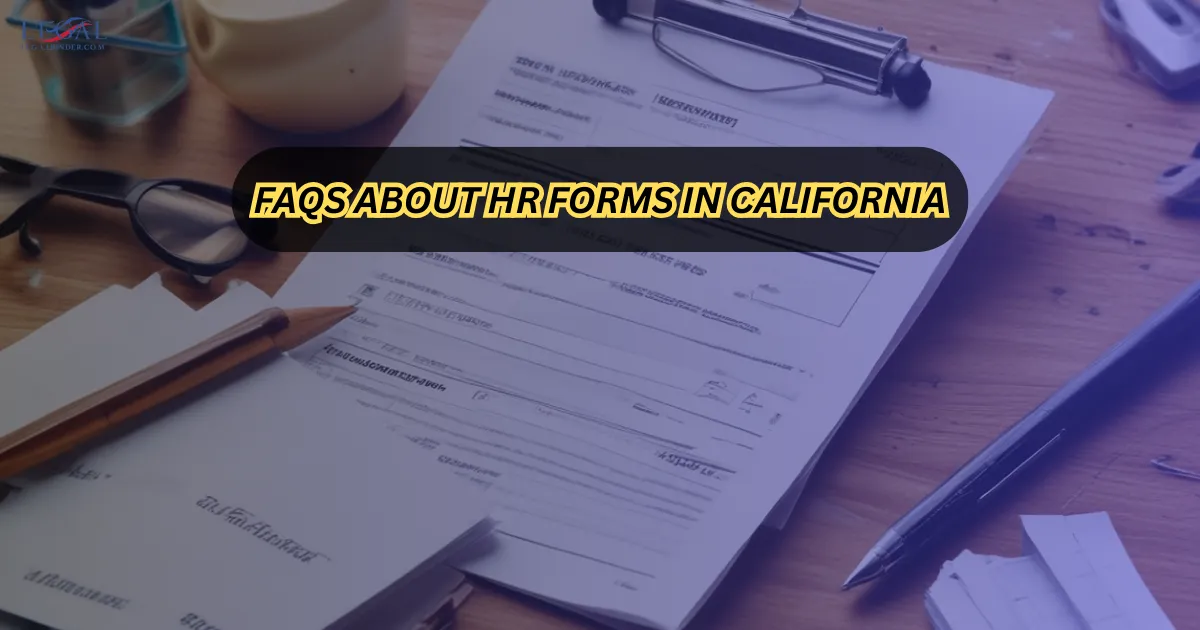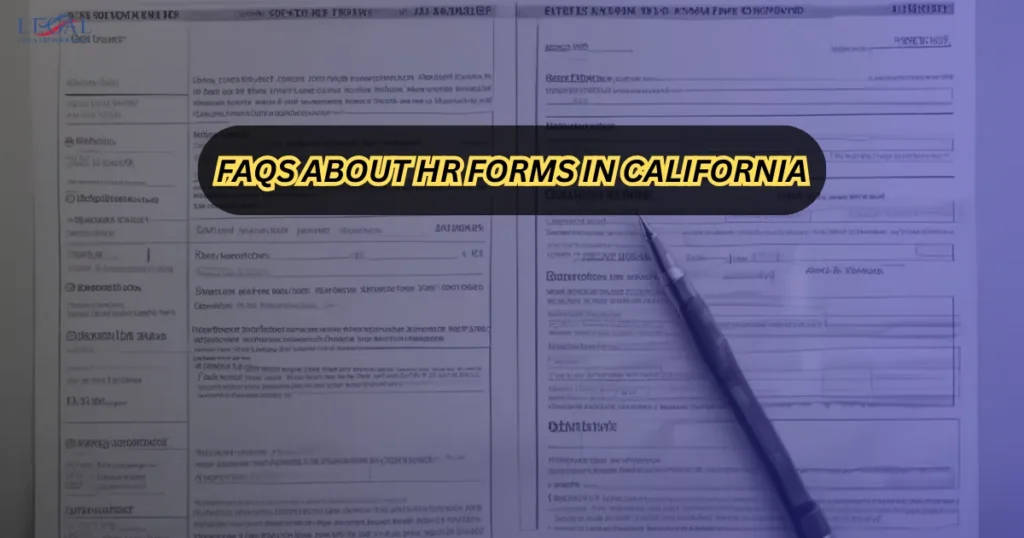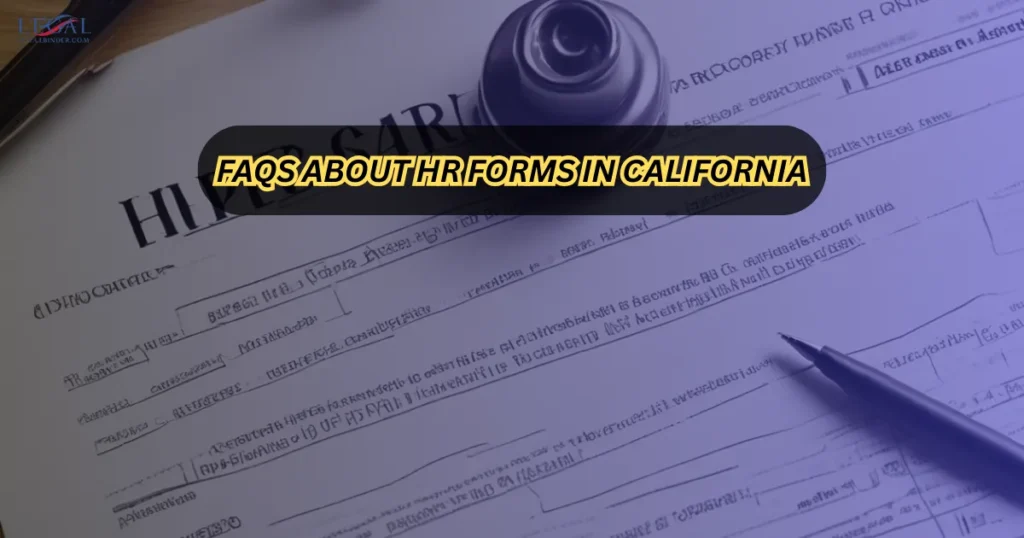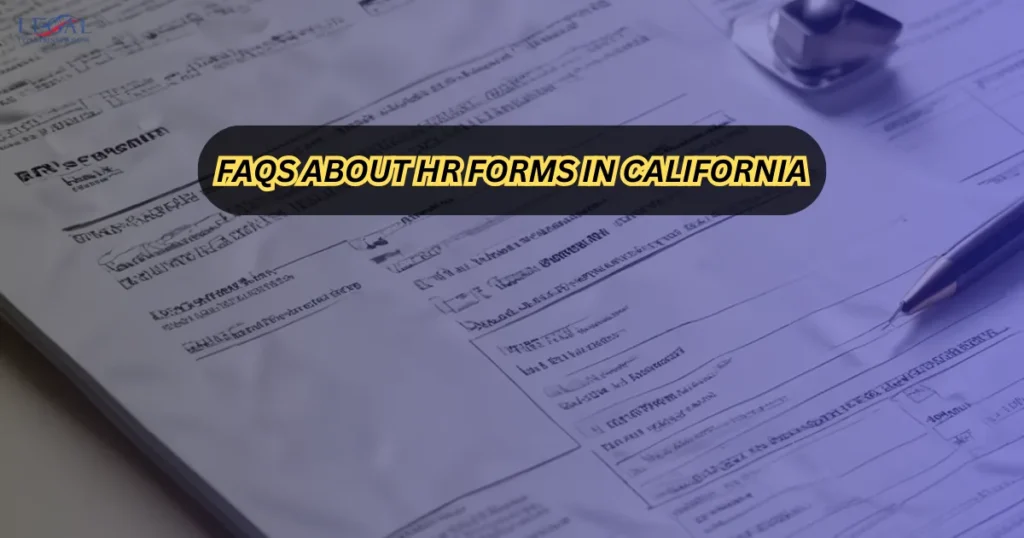Physical Address
304 North Cardinal St.
Dorchester Center, MA 02124
Physical Address
304 North Cardinal St.
Dorchester Center, MA 02124

If you’ve ever sat staring at a stack of HR forms in California, wondering if you’ve completed them correctly, you’re not alone. Employers across the state deal with the same questions: Which forms are mandatory? How often do they need updating? What happens if something is missed? These uncertainties can feel overwhelming, especially when you know that California’s employment laws are among the strictest in the country.

In this article, you’ll find a comprehensive guide answering the most frequently asked questions about HR forms in California. With practical insights, official government resources, and step-by-step clarity, this guide helps you confidently handle your HR paperwork while avoiding costly mistakes.
For additional legal and HR resources, don’t forget to visit our homepage.
Every new employee must complete a set of mandatory forms, including:
California has strict wage statement laws under the Department of Industrial Relations (DIR). Pay stubs must include:
Employers must provide forms for:
Having the correct leave request forms ensures compliance and prevents employee disputes.
California law requires final wages to be paid immediately in many termination situations. Required termination forms may include:
Record retention rules vary, but general guidelines include:

Yes, California requires both federal (W-4) and state (DE-4) withholding forms for accurate payroll deductions.
Late or missing DE 34 filings may result in penalties from the EDD.
Yes, electronic signatures are valid under California law, provided proper authentication measures are used.
No, generic forms often miss California-specific requirements, such as detailed pay stub disclosures.
You can access official forms through the DIR and EDD websites.
Handling HR forms in California doesn’t have to be stressful. With the right knowledge, updated resources, and consistent practices, you can stay compliant, avoid penalties, and foster a more professional workplace.

Start by reviewing your HR processes today and making sure your forms are complete, accurate, and up to date. By doing so, you’ll strengthen compliance, protect your business, and build greater trust with your employees. For more guides and compliance resources, visit our homepage.